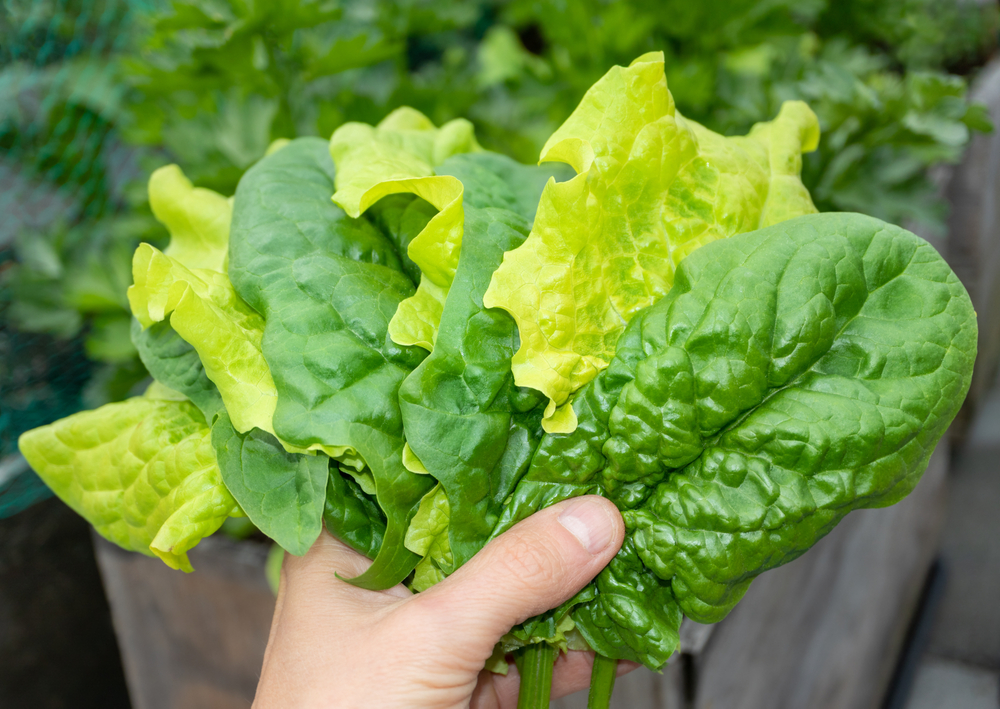
Lettuce is one of the easiest crops for any gardener to grow.
But getting it right means thinking about which varieties are right for you and your area.
If you choose the right lettuces, you can potentially grow lettuce for yourself and your family throughout the whole year.
And as anyone who’s bought those clamshells of baby lettuce greens at the store can tell you – homegrown is the way to go.
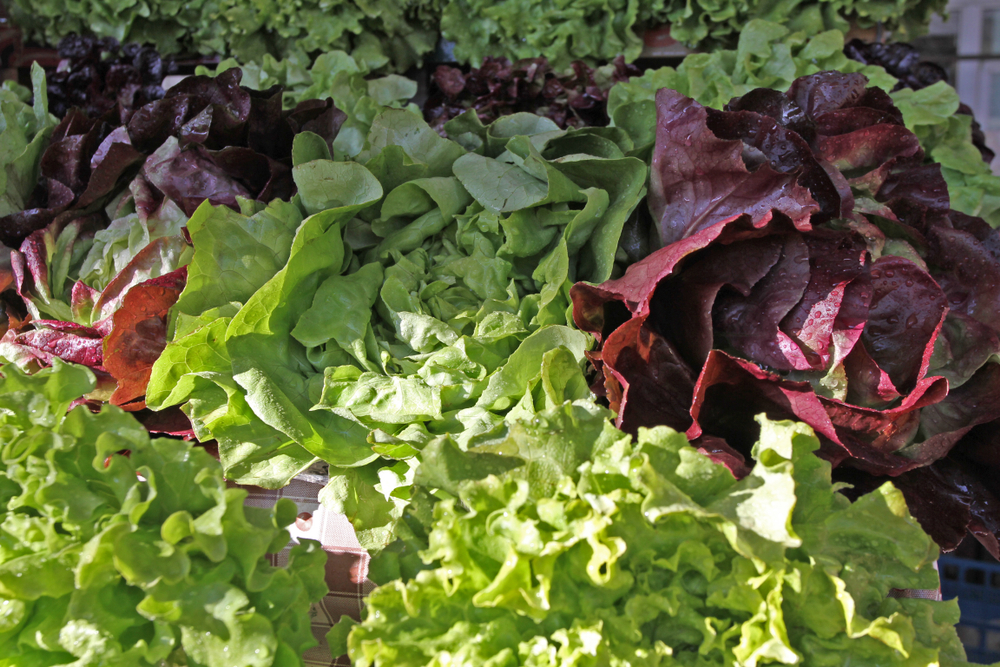
Up until around August, you can still sow a wide range of lettuces. Some grow quickly and produce a crop for the fall even without the need for any special winter protection.
Others are hardy enough to survive with some kind of protection even once the first frosts arrive. But you do have to choose the right varieties.
Let’s take a look together, and explore the why’s and how’s of growing lettuce in the fall. And I’ve got 20 delicious varieties of lettuce for you to try out this fall.
Why Grow Lettuce for Fall?
First of all, you might be wondering why you should keep sowing lettuce (or even sow it for the first time) this late in the year.
Easy – I’ve got for excellent reasons why you should add lettuce to your fall garden:
- You’ll be able to keep eating fresh salads even as colder weather arrives. And we all know how sad store-bought produce looks come October.
- It will help you make the most of your space by keeping beds (or containers) planted up for more of the year. More food grown means less food bought.
- Growing lettuce can help cover and protect the soil after the main harvest of other annual crops is out of the way. It a great quick crop before a winter green manure, or it can stay in place itself all winter, depending on where you live.
- Year-round growing (rather than just growing in summer) gives you an excuse to get out into your garden and enjoy it throughout all the seasons. And lettuce is a great plant to start with if you want to ease into year-round growing.
How to Keep Growing Lettuce in Fall (and Winter)
Even in cold winter areas, you can grow lettuce through the colder months if you give your plants some protection. Where I live, (zone 8B) I don’t just grow lettuce from spring through fall – I also have lettuces that grow in my unheated polytunnel all winter.
Fresh salad in January!
If you live in a colder climate zone, you can still grow lettuce year-round. But you may have to provide additional cloche protection.
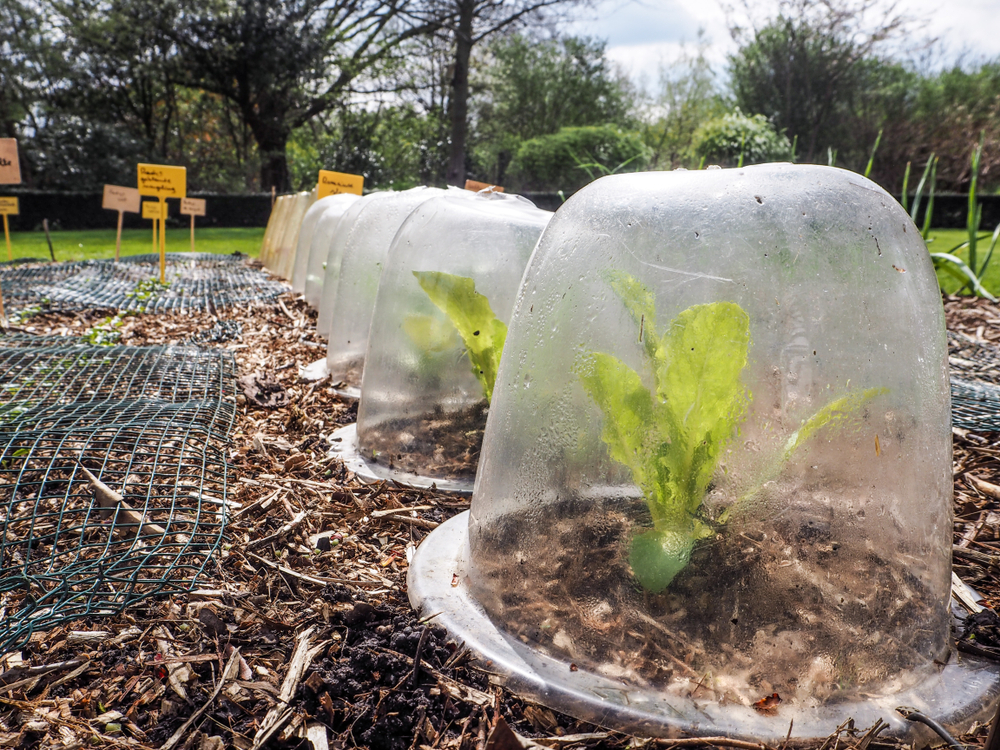
- You could also consider making hotbeds for your polytunnel or greenhouse, to provide heat from below.
- Or you could heat an undercover growing area in a sustainable way. (Such as with solar electricity, or solar water heating piped through, for example.)
You can also extend your growing season for fall plants by using other interesting techniques – such as incorporating more thermal mass to store heat energy. Or you could integrate an undercover growing area with a chicken coop, for example, so the coop/chickens help heat the space.
Of course, you could also simply grow lettuce indoors, or in containers that can be brought indoors before the first frosts.
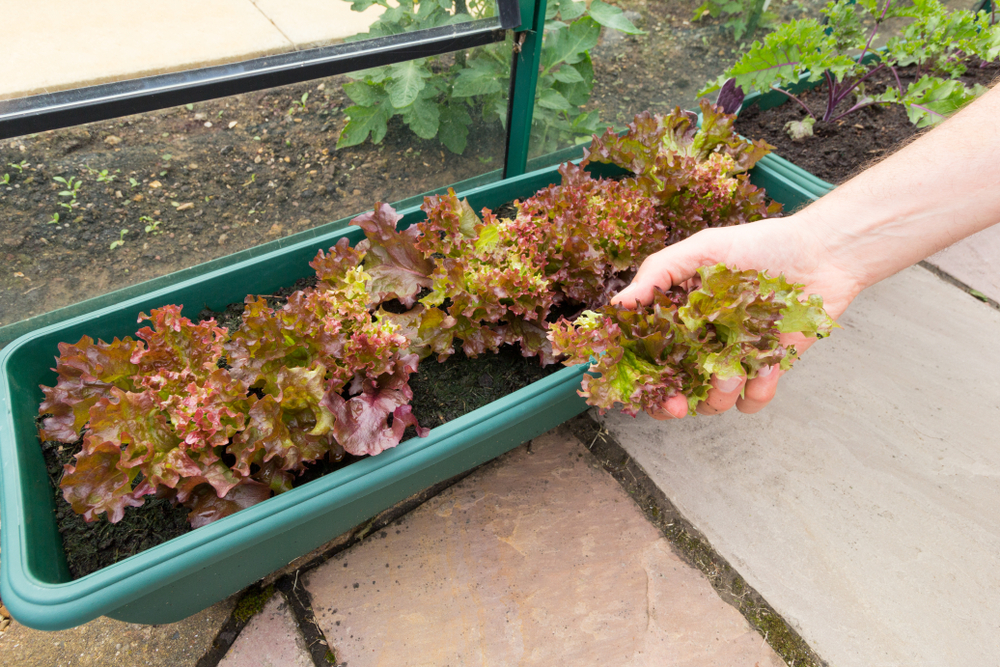
Types of Lettuce
Before we delve deeper and look at some of the delicious varieties of lettuce you can sow now for fall, it’s helpful to discuss the different types of lettuce.
There are four main types of lettuce:
- Loose-leaf lettuce
- Romaine/cos lettuce
- Butterhead/ Bibb lettuce
- Crisphead/ Batavia/ Iceberg lettuce
Which type of lettuce you choose to grow will depend not only on where you live. It will also depend on your personal preferences, and of course on the time of year. Don’t forget, you can make sowing lettuce easier by making DIY seed tape with your favorite varieties.
Read on to learn a little more about each of these four types of lettuce, and for some of the best varieties of each type to sow in summer for fall (or winter) harvests.
Loose Leaf Lettuce Varieties to Sow for Fall
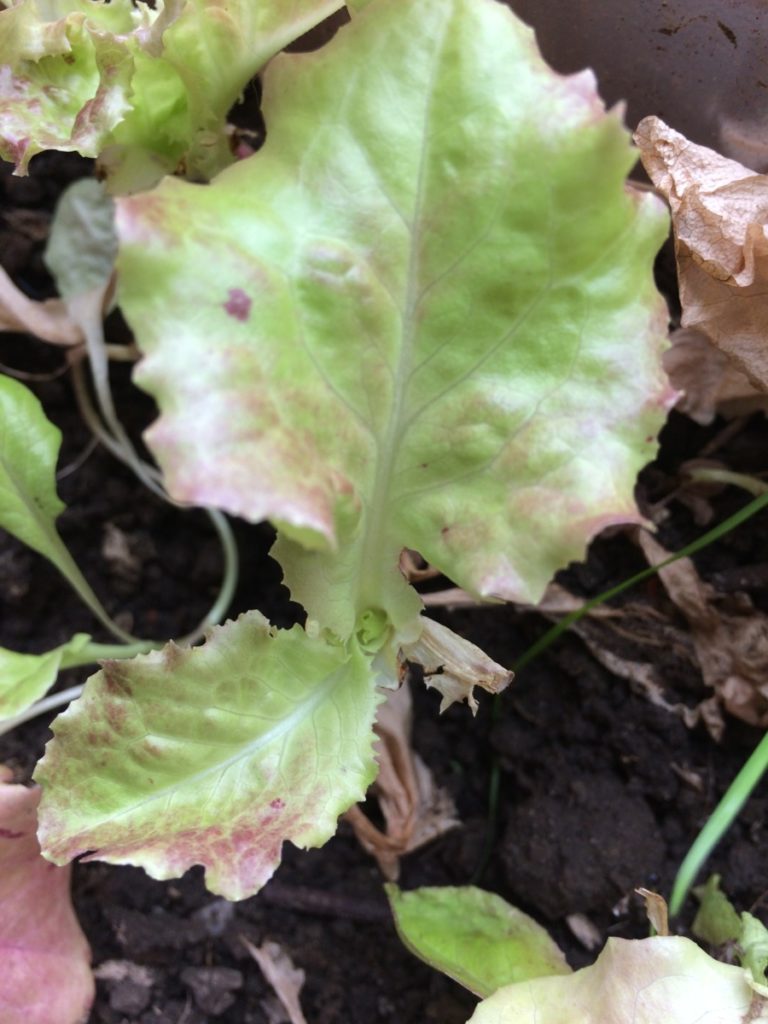
Loose-leaf lettuces are definitely the easiest crops to grow if you’re a novice gardener.
These are the most forgiving type of lettuce, and also the ones that provide a yield the quickest, so you can eat salads from your garden sooner rather than later.
Loose-leaf lettuces, as the name suggests, don’t form tight heads. Rather than forming hearts, these lettuces have leaves loosely arranged around a center.
These lettuce types are cut-and-come-again.
So you can simply harvest leaves as needed, and new leaves will regrow.
Check out How to Grow Cut-and-Come-Again Lettuce for more detailed growing advice for this type of lettuce.
Often, you can begin to pick the first leaves in as few as 4-6 weeks. So there’s still plenty of time to get sowing to make sure you have plenty to eat in your garden after summer has gone.
Loose-leaf lettuce comes in a huge variety of tastes, textures, colors and forms. There are loose-leaf lettuces that can be grown all year round.
Here is a selection of loose-leaf varieties that I recommend sowing now to enjoy in the fall:
- Mascara
- Drunken Woman
- Grand Rapids
- Black-seeded Simpson
- Oakleaf
Butterhead/ Bibb Lettuce Varieties to Sow for Fall
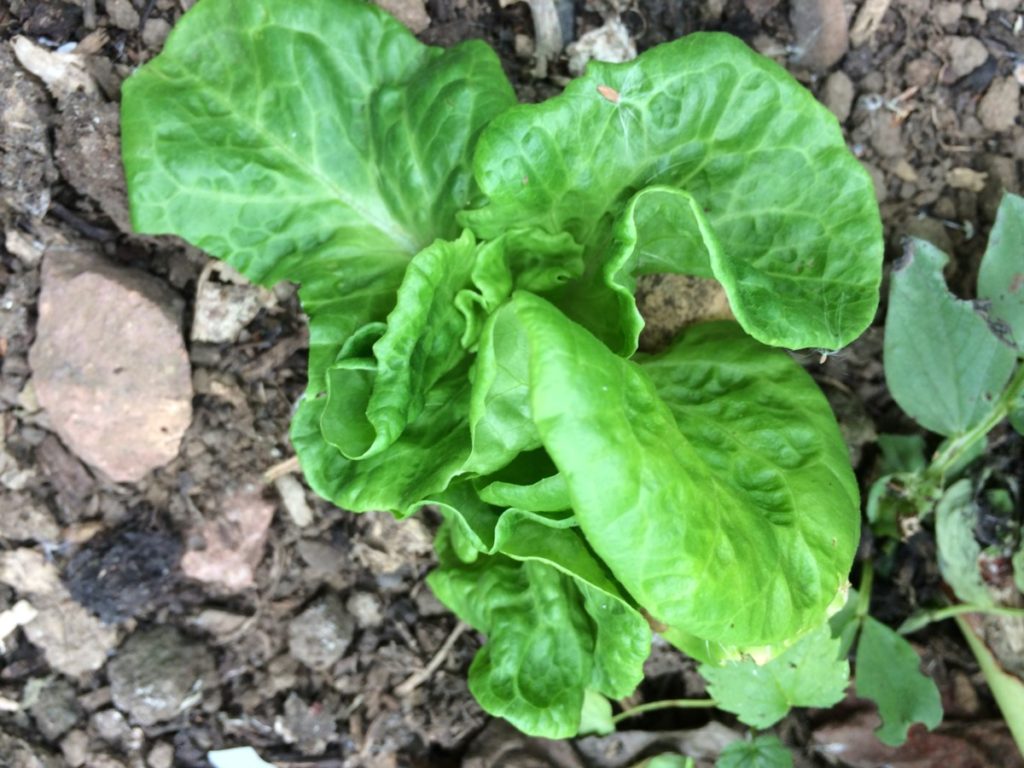
Butterhead lettuces are also relatively easy to grow.
Unlike loose-leaf lettuces, they have rose-petal like forms. The rosette shape makes this a rather ornamental one. But they taste great too and look beautiful in any salad made with them.
Sometimes, this type will form heads at their core, but these are generally softer and less crisp than the other two types described below.
One great thing about this type of lettuce is that there are still plenty of heirloom cultivars out there to try.
Though they take longer to reach maturity than the loose-leaf types often do, they’re relatively quick growing. So you still have time to sow some and harvest before the end of the growing season. (Especially if you have some protection in place in case of early frosts.)
As with loose-leaf varieties, there are plenty of butterhead lettuces you can sow all year round. Some are great for hot summer weather, and others are great at withstanding the cold.
Here are some great butterhead/Bibb type lettuces that you should consider:
- May Queen
- Speckled Bibb
- ‘Merveille des Quatre Saisons’
- Buttercrunch
- Tom Thumb
Romaine/ Cos Lettuces to Sow for Fall
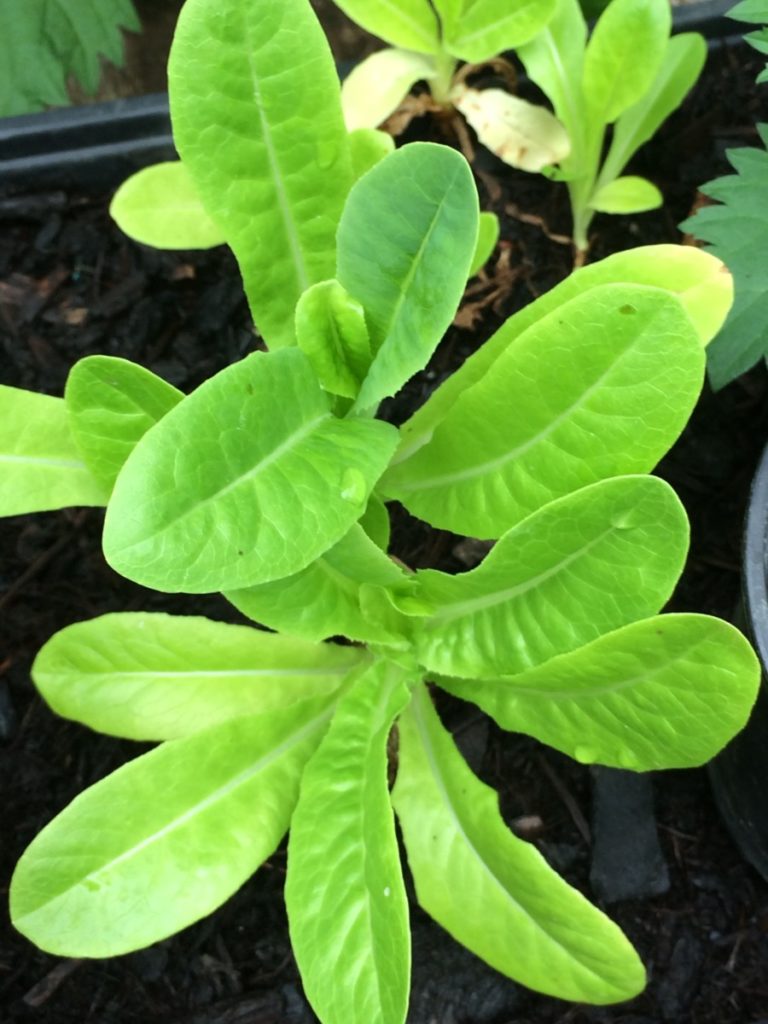
Romaine lettuces (often known as Cos lettuces in the UK) are another type of lettuce that you can sow this time of year. This cultivar group contains some of the oldest lettuce cultivars, and there are some excellent heirloom varieties are available.
This type of lettuce is characterized by a tight and upright shape. These lettuces tend to be relatively crisp, often with lighter leaves on the inside and darker leaves externally. Many are green but there are also some interesting varieties with reddish coloration.
While potentially somewhat more challenging to grow than loose-leaf lettuces, and butterhead, romaine types are still pretty easy to grow in most temperate climate gardens.
They’ll take a little longer than loose-leaf lettuces to reach a decent size for harvest, but are still reasonably quick to mature.
If you’re growing your lettuce undercover from the start, these lettuces can be a good choice, because they can cope with higher temperatures than other types. Their ability to withstand warmer conditions also means that these are a great choice for areas with hot summers.
However, though this type of lettuce is known for being good with the heat, many varietals can cope with cooler and cold temperatures too. They are great for adaptability.
Some romaine-type lettuces that are good to sow for fall include:
- Little Gem
- Rouge D’Hiver
- Winter Density
- Frisco
- Exbury
Crisphead/ Batavia/ Iceberg Lettuce Varieties to Sow for Fall
Those dense, spherical lettuces you may be used to buying in a store are commonly referred to as crisphead or iceberg lettuces. If you like a particularly tight and crisp lettuce then these are a type of lettuce you will enjoy.
However, it’s worth noting these are generally more challenging to grow successfully than other types of lettuce.
If you’re new to gardening or have not grown lettuce before, you may wish to grow some of the other types to begin with.
This type of lettuce takes a lot longer to reach harvestable size, and there are a number of challenges involved in growing them successfully.
Some lettuces of this type that you can sow now, and which have a good tolerance to chilly autumn and winter weather include:
- Reine de Glaces
- Red Iceberg
- Nevada
- Relay
- Saladin
Note – these lettuces won’t usually be ready to harvest by fall. But you can grow some varieties successfully over the winter months.
Of course, the twenty lettuce varieties mentioned in this article are just a small portion of the many different options out there that you should consider. The more protection you provide, the longer the list of options will become.
And if you’re having trouble finding seeds this late in the season, Baker Creek Heirloom Seeds is a wonderful resource for quality seed. They always have an incredible selection of lettuce seeds of all types.
So, what are you waiting for? Salad season is far from over.
And don’t forget that you can store your freshly harvested salad greens for up to two weeks with this clever little trick.

Get the famous Rural Sprout newsletter delivered to your inbox.
Join the 50,000+ gardeners who get timely gardening tutorials, tips and tasks delivered direct to their inbox.

